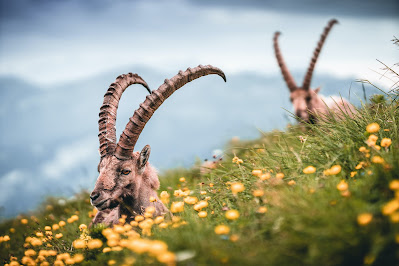Animals are living organisms that belong to the
kingdom Animalia. They are characterized by their ability to move, their
heterotrophic nature (they obtain their food from other living things), and
their lack of cell walls.
Animals play important roles in ecosystems,
serving as both predators and prey, pollinators, decomposers, and more. They
are also important to humans for a variety of reasons, including as sources of
food, companionship, and for their contributions to scientific research.
Like all living things, animals require certain conditions to
survive and thrive, including access to food, water, and suitable habitat. Many
animal species face threats from habitat loss, climate change, pollution, and
hunting, among other factors. Conservation efforts are underway to protect
vulnerable species and their habitats.
Animals have a wide range of adaptations that
allow them to survive in their respective environments. These adaptations
include physical features such as body shape, camouflage, and protective
coverings, as well as behavioral adaptations such as migration, hibernation,
and communication.
There are many different types of animals, including mammals, birds,
reptiles, amphibians, fish, and invertebrates. Mammals are characterized by
their fur or hair, milk-producing glands, and three middle ear bones. Birds are
characterized by their feathers, beaks, and wings, and reptiles are
characterized by their scaly skin and ability to regulate their body
temperature. Amphibians, such as frogs and salamanders, are characterized by
their ability to live both on land and in water, and fish are characterized by
their gills and ability to live exclusively in water. Invertebrates, which make
up the vast majority of animal species, include insects, spiders, crustaceans,
and mollusks, among others.
Animal behavior can be fascinating to
observe, and scientists have studied a wide range of animal behaviors, from the
migration patterns of birds to the hunting strategies of predators. Animal
communication is also a fascinating area of study, as animals use a variety of signals to communicate with each other,
including visual, auditory, and chemical signals.
Finally, it is important to note that animals have a moral status and should
be treated with respect and compassion. Many people advocate for animal rights
and welfare, arguing that animals
should not be subjected to unnecessary suffering, abuse, or exploitation. This
has led to the development of laws and regulations aimed at protecting animals from harm and promoting their
well-being.
Animals have complex social lives and
relationships with each other. Some animals,
such as primates and cetaceans (whales, dolphins, and porpoises), have been
observed engaging in behaviors that suggest they have emotional intelligence,
such as empathy, compassion, and even mourning.
Animal intelligence is also a subject of
study, and some species have demonstrated remarkable cognitive abilities, such
as problem-solving, tool use, and even self-awareness. For example, some
primates have been observed using tools to obtain food, while dolphins have
been observed using tools for hunting and communication.
Humans have a significant impact on animals and their habitats. Many animal
species are threatened by habitat loss, pollution, climate change, and hunting
or poaching. As a result, conservation efforts are important to protect
vulnerable species and preserve biodiversity.
Zoos and aquariums are institutions that
house and care for animals for
public viewing and education. While they can provide important educational and
conservation benefits, there is debate over the ethical implications of keeping
animals in captivity, particularly
for entertainment purposes.
In addition to the ethical considerations,
human-animal interactions can also have public health implications. For
example, zoonotic diseases are infectious diseases that can be transmitted
between animals and humans. It is
important to take precautions to prevent the spread of zoonotic diseases, such
as proper hygiene and vaccination of both humans and animals.



